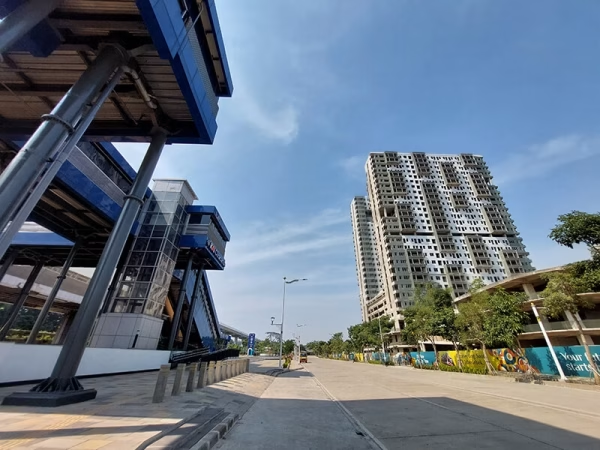Home » AHY Encourages TOD Development for Future Cities: LRT CITY Ciracas as a Model of Modern Integrated Living
AHY Encourages TOD Development for Future Cities: LRT CITY Ciracas as a Model of Modern Integrated Living

Jakarta – The Coordinating Minister for Infrastructure and Regional Development, Agus Harimurti Yudhoyono (AHY), emphasized the importance of developing future cities that are compact, connected, and transit-oriented (Transit Oriented Development/TOD). According to him, the TOD concept is key to creating urban life that is efficient, environmentally friendly, and sustainable.
“The model of urban streets is not only about mobility, but also about public life and social connection. Nature must also have its rightful place in our urban vision. Green infrastructure such as parks, rivers, and open green spaces are public assets that protect life,”
AHY made the statement while opening The 54th EAROPH Regional Conference 2025 in Jakarta, Monday (October 6, 2025).
Government Collaboration in Promoting Transit-Oriented Areas
AHY explained that the central government, through the Coordinating Ministry for Infrastructure and Regional Development (Kemenko IPK), continues to collaborate with local governments to develop TOD areas in urban regions. One of the latest focus projects is the Transit Oriented Corridor in Taman Mini, East Jakarta, designed as a multimodal transportation hub connecting the LRT, MRT, and surrounding residential areas.
“This concept will make it easier for people to switch between modes of transportation without relying on private vehicles. Going forward, we aim to introduce similar concepts in other major cities,” he said.
AHY.
LRT CITY Ciracas: A Real Implementation of TOD Living in East Jakarta
One of the areas aligned with AHY’s vision is LRT CITY Ciracas, a modern residential project developed by PT Adhi Commuter Properti Tbk (ADCP). Located at Jl. Pengantin Ali No. 88, Ciracas, East Jakarta, this area offers an integrated housing concept directly connected to the LRT Ciracas Station, making it an ideal example of a Transit-Oriented Development (TOD)-based property.
With access to various public facilities within just 15 minutes, residents of LRT CITY Ciracas can enjoy an efficient and sustainable lifestyle. The area is also equipped with commercial zones, sports facilities, and green open spaces, creating a living environment that is both healthy and productive.
The presence of projects like LRT CITY Ciracas demonstrates how the TOD concept can be effectively implemented in densely populated urban areas like Jakarta, while also supporting the government’s mission to reduce reliance on private vehicles.
Regional Support for TOD Development
Outside Jakarta, support for TOD development is also coming from various regions. East Java Deputy Governor Emil Elestianto Dardak stated that the provincial government is preparing a Sustainable Urban Mobility Plan through the Gerbang Kertasusila program (covering Gresik, Bangkalan, Mojokerto, Surabaya, Sidoarjo, and Lamongan).
The plan aims to integrate public transportation and railway networks as the foundation for developing TOD areas in East Java. The project has also received €230 million in funding from Germany’s KfW, focusing on the development of environmentally friendly connectivity.
Building More Connected and Environmentally Friendly Cities
Both the central and regional governments are now taking a more serious approach in building transit-based urban ecosystems. Concepts such as those implemented in LRT CITY Ciracas serve as real inspiration that efficient, green, and inclusive cities are no longer just a vision, but can be realized through collaborative planning between the government and property developers.
With the growing number of TOD-oriented projects, Indonesia is moving toward the development of future cities that are more connected, productive, and sustainable.
